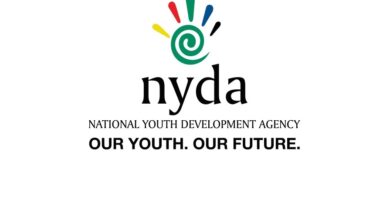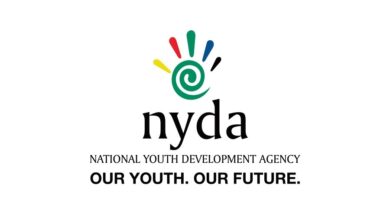Top Reasons Why Africa Is Poor
Today, 300 million African people live on less than $1 US per day. The incidence of extreme poverty never seems to go down, despite decades of work by African governments and NGOs, outside NGOs, and foreign government aid programs. What causes this entrenched poverty, on a continent rich with natural resources?
Unfortunately, poverty in Africa doesn’t result from just one or two causes. There are a number of different factors at work, all interacting with one another, and making the problem of entrenched poverty extremely difficult to solve.
Some of the major causes of poverty include: war and armed conflict, poor farm policy, lack of access to credit, rampant unemployment, lack of access to education, and disease.
WAR AND ARMED CONFLICT
One-fifth of all African people live in countries seriously disrupted by armed conflict. When war is ranging all around, it’s very difficult to grow crops, continue to work in an office, or earn money. Ordinary life becomes impossible, as people are forced to flee their homes.
Thus, productivity goes down, and poverty rates shoot up. Countries at war produce an average of 12.5 per cent less food per person than they do during peace time.
One example is Angola, where a 27-year long civil war killed half a million people and left 3.8 million people displaced. Virtually all the country’s infrastructure was destroyed in the conflict, and more than three-quarters of the population fell into extreme poverty. Today, 85% of Angolans make their living through subsistence farming, working fields that conceal left-over landmines.
POOR FARM POLICY
The agriculture sector accounts for about 60% of African workers. Three-fifths of them are subsistence farmers, trying to eke enough food from their plot to feed their family. The rest work for large multinational industrial farms, or labor on huge export-crop fields.
Cash-strapped African governments try to squeeze every last penny out of their agricultural sector, imposing export taxes and commodity taxes on production. This drives up prices and drives down wages, increasing poverty rates. Meanwhile the governments of European nations and the US do the opposite: they subsidize farmers to the tune of $300 billion US per year.
In addition, African governments often are forced to sell their crops for bargain prices, in order to remain current on their foreign debt load. Importing nations in the developed world know that the producers have to sell at whatever price, so offer artificially low amounts for their produce.
LACK OF ACCESS TO CREDIT
The very poor can’t get a bank loan or a credit card with which to make basic purchases that could help lift them out of poverty. While they may need only a tiny cash infusion, between $20 and $300 U.S. to buy a cell phone, some livestock, a sewing machine, etc., this is often impossible for people in poverty. They don’t have any collateral, or income, and they don’t have a credit record.
Increasingly, micro-lending organizations are addressing this problem by specializing in loans to the very poor. However, micro-lending is still centered in Asia, and is just getting started in Africa. As it grows, it may cause substantial improvements in the lives of many of Africa’s poorest people.
RAMPANT UNEMPLOYMENT
The unemployment rate in some African nations is more than 70%. Zimbabwe’s unemployment rate is now 85% and rising. Even in South Africa, one of the most developed African nations, unemployment is around 36%, significantly higher than that in Europe or North America.
With so many people out of work, it’s little wonder that economic productivity is low, and poverty rates high.
LACK OF ACCESS TO EDUCATION
A UN survey in 2000 found that only 58% of school-aged children in Africa were actually enrolled in school. Somewhere between 40 and 45 million African children will never set foot inside a school building.
Across Africa, most schools have to charge the students fees in order to operate. Even if the fees are as little as $20 or $30 US for a child to attend for a year, the price of basic education can be out of reach for many poor families. In addition to school fees, parents also have to buy uniforms, books, and possibly lunch for their students, and many families simply can’t afford it.
Children who don’t have even an elementary-school education have little hope of finding steady work when they grow up. If they join the ranks of the chronically unemployed (or underemployed), their children too may miss out on schooling, and the cycle will continue.
DISEASE
According to the UN, about 2 million African people die each year just from AIDS, and 24 million more get infected with HIV. Deaths from malaria also total about 2 million, although a higher percentage of those killed by the parasite are small children. Each disease costs Africa about $10-12 billion US every year in lost GDP, and plunges more families and whole communities deeper into poverty. Africa also suffers from epidemics of cholera, measles, and polio.
The link between disease and poverty is easy to see. Workers who are weakened by AIDS or malaria miss work, and they typically don’t have paid sick leave. Their employers lose their productivity, decreasing profits. Other family members also have to stay home from work or school to take care of the ailing person, so the loss expands. In many villages, elderly grandparents who have lost several adult children to AIDS are working to feed 8 or 10 orphaned grandchildren. It’s almost impossible for them to feed all those mouths and scrape together all those school fees.
CONCLUSION
Poverty in Africa is a complex problem, born of many interlocking causes. It will be difficult to solve, but the world must continue to try. It’s unconscionable that so many people continue to live in such grinding poverty.




